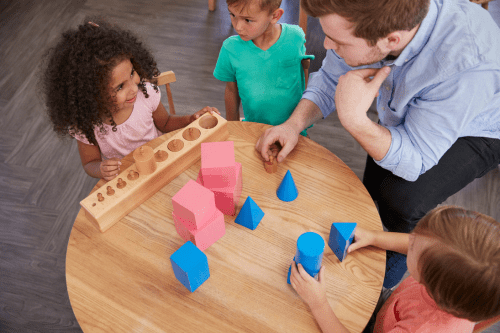Children and adolescents often struggle with existential questions such as “Who am I?” and “Who do I want to become?” As early as infancy, children began to recognize that they are a separate being with a stable sense of self with interconnections to other objects and beings. Young children begin to identify themselves using very concrete categories such as developmental age, gender, size, and skills. As children age and begin to forge new and stronger relationships with family members, classmates, teachers, and community members, and develop a more profound understanding of their culture, they develop self-identity.
According to Psychology Today, “identity encompasses the memories, experiences, relationships, and values that create one’s sense of self.” Over time, each of these elements blends together to create a steady sense of who one is, even as new facets are incorporated. Identity is formed through three key tasks:
- Discovering and developing one’s potential
- Choosing one’s purpose in life
- Finding opportunities to exercise that potential and purpose
Identity is also greatly influenced by interactions with teachers and peers during childhood and adolescence, making the classroom experience incredibly important for a child’s development. In fact, when considering a student’s needs, academic engagement and cognitive development may be unlikely unless the social nature of the classroom is addressed. Students need to feel safe in order to be fully engaged in the classroom.
Montessori guides hold the responsibility for creating identity-safe classrooms, “places that foster belonging and value for students of all backgrounds.” Elements of the Montessori pedagogy naturally create identity-safe spaces. For instance, looping, or the practice of students moving up from one grade to the next with the same teacher, a hallmark of the Montessori Method known as mixed-age groupings, fosters a community of care with conditions that promote the flourishing of positive connections. The student-centered approach of Montessori philosophy also promotes autonomy, cooperation, and student voice, helping students develop self-confidence as they contribute their ideas, thoughts, and feelings.
The work does not stop there, though. Montessori educators should strive to help their students reach their highest potential by affirming all identities, acknowledging and supporting their students’ social and emotional development and cultivating diversity.
Here are Six Ways Montessori Guides Can Put These Practices into Place, Creating Identity-Safe Classrooms:
Acknowledge and Validate All Types of Identity
Montessori guides should make a conscious effort to explicitly introduce the concept of identity. It can be helpful to engage students in a brainstorming session, identifying all the different types of identity including a person’s name, age, race, gender, culture, language, interests, physical appearance, and more. Doing so will help each student to feel seen and appreciated, no matter their identities.
Cultivate Diversity on a Daily Basis
Diversity should be utilized as a resource for learning. It should not be viewed as an add-on to the curriculum, but should be an integral part of everyday learning. Montessori guides should make intentional efforts to include diverse music, art, stories, and activities that reflect the identities of not only each student in the class, but also those not reflected in the classroom as well. They should also review their classroom libraries, ensuring that diversity is cultivated and that a range of backgrounds are reflected in classroom literature.

The opinions expressed in Montessori Life are those of the authors and do not necessarily represent the position of AMS.


